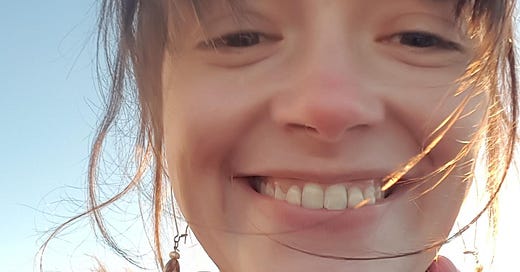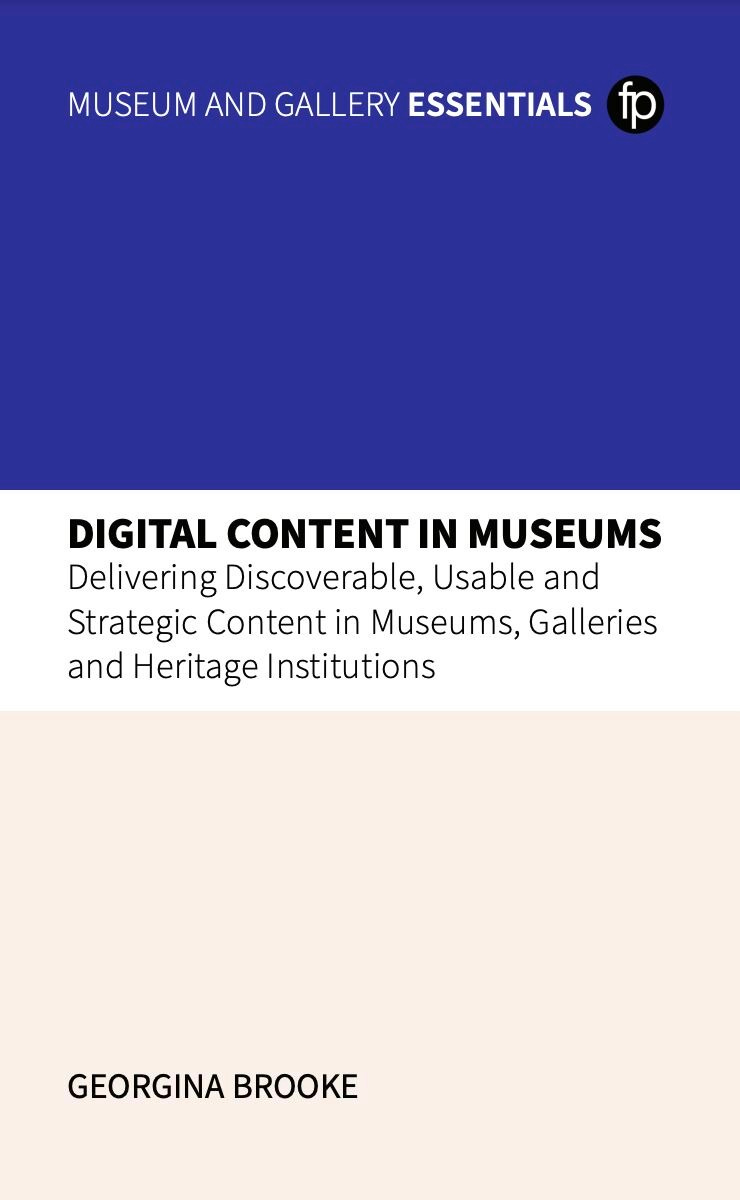We’ve just hit 4,000 subscribers 🎉 - WELCOME!
Seeing as there’s rather a lot of you now, it feels like a good time to talk about what this newsletter/blog is, who I am, and how you can get involved.
What is it?
Cultural Content goes out fortnightly and profiles articles relating to digital best practices and thought leadership in the cultural sector.
I’m always on the hunt for new guest posters, so get in touch if you’ve got an interesting story to tell: georgina@onefurther.com. When I haven’t got a guest post, I write something.
Who are you?
I’m a Senior Content Strategist at the digital agency One Further, which helps cultural organisations with analytics, content and digital marketing. I previously held digital roles at National Museums Scotland, the Ashmolean, the University of Oxford and worked for GDS for the beta rollout of GOV.UK.
I’m also Chair of the Museums Computer Group, which hosts an annual muse/tech conference at the end of the year and runs the discussion list which has been described as ‘like ChatGPT but for human intelligence’ - crowdsourcing answers to your digital / museum questions.
What does this newsletter talk about?
Last year I wrote a book ‘Digital Content in Museums’. Interested in being notified once it’s available? Sign up here.
In it, I talk about the discoverability and usability of digital content – how to reach more people and how to give them a good time once they’ve got there, and how that changes across website, and different social media platforms.
The book then looks at ‘content strategy’ - a term I think we use somewhat woolily in the sector. We’re wooly about what we mean by content and we’re wooly about what we mean by strategy. I’ve written more about this in this newsletter too:
Now I’ve written that book, a lot of the impetus for writing ‘how to’ content is i) a little exhausted and ii) has made me consider how across the sector there is a fair amount of digital knowledge. So why doesn’t digital best practice happen? What are the blockers to full-scale digital adoption?
Bee in my bonnet: sector audience development must see digital as core
I was on a panel yesterday at the Museum Association’s MuseumTech conference with John Stack (Director of Digital Innovation and Technology, The National Gallery), Trish Thomas (Head of Digital Innovation, London Museum) and Ruth McKew (Director, Headland Design), talking about digital strategy and digital audience development.
We talked about how the sector still thinks about everything through the lens of physical audiences. When it thinks about diversifying audiences, the established idea is that you programme more diverse exhibitions to attract a wider range of audiences.
This feels bonkers to me.
I don’t see how an exhibition planned years in advance and costing c. £25 is going to diversify your audiences beyond the profile who normally come through your doors.
And are those audiences still going to be around and in the same numbers in 10 or 20 years’ time? The numbers you can get through the physical doors of your museum are always going to be more limited than who you can reach virtually.
Museums need two parallel versions of the marketing funnel working in tandem: one for in-person audiences and one for digital audiences.
We need to consider digital products not simply as advertising for the physical expereinces but as a destination, a product, in its own right. And yes, digital content can and should bolster the physical audience profile, but it’s not only that.
This is what the Tank Museum has done brilliantly; they have a separate audience, a separate income stream attached to their digital content compared to their physical offer.
They know the visitors they can reach in their physical location in Bovington, Dorset are limited and tend to index highly on families. Whereas online, they speak to a global community of avid tank fans that is willing to pay to be part of the Tank Museum’s online community.
The continuity between both approaches is the strength, value, and relevance of the collections and the expertise of its staff. There’s more about their approach, from the man behind it, here:
What are you interested in/working on at the moment?
At One Further, we’ve got quite a few projects on the go at the moment involving YouTube.
YouTube’s interesting to me. All of the social platforms are moving to a model whereby you see content based on your interests, not who you follow.
Whereas in the early 2010s, when Facebook was the predominant social platform, you mainly saw content based on accounts you ‘followed’. Today you’re much more likely to see content the algorithm thinks you’re interested in, regardless of whether you’ve heard of the creator before or not.
What’s interesting about this shift (from content-from-followers to algorithm-picked-content) is that it means we can reach audiences who haven’t already heard of us.
YouTube’s not the only platform that does this (all of them are pivoting to this model), but it’s been doing it for much longer. And it’s not mired in conversations about ownership, overnight bans in the US, and in government departments.
There are also some interesting models of digital monetisation within YouTube.
The topic of monetisation is a bit thorny in the sector. It’s not traditionally been something that digital teams do. But models used by the likes of the Tank Museum and Royal Institution have gotten over this and monetised their content through YouTube in the form of digital membership schemes.
As well as financial, the other benefit of YouTube memberships, in terms of audience development, is that you’re building on that ‘loyalty’ segment right at the bottom of the funnel.
These audiences are useful to you not just financially but in terms of the depth of engagement they have. They can speak directly with video creators about the content they want to see, ask presenters questions and, in effect, have a collaborative relationship with creators, breaking down the barrier between institution as announcer and visitor as receiver… a way for the participatory museum to play out in the social platform algorithms of 2025.
What about you?
And it would be great to know a little more about you…
How to get involved
If you’ve got a story to tell that involves tech and the culture sector, I’m all ears. Get in touch at georgina@onefurther.com.
If you’d like to work with us; wonderful. You can get in touch with me directly or through the One Further website.
Interested in a free content strategy workshop? We’re working on some new workshops and would like to test them out. They’ll be delivered in London in the next couple of months but there are likely to be remote versions at some point too. Head here for details.









Very much agree with the physical and digital parallel approach to cultural engagement. The covid period saw most film festivals embrace a hybrid model
(an older paper that analyses the shift: https://www.tandfonline.com/doi/full/10.1080/09548963.2023.2193872). With the exception of Sundance, the biggest film festivals went back to in person only - they say because of the prestige element, but I think it’s more the complications of online screening rights combined with the trade function of festivals that require face to face networking - neither problem museums would face. Sheffield Doc Fest is a shining example of the model you are talking about. Maybe worth analysing as a successful case study?